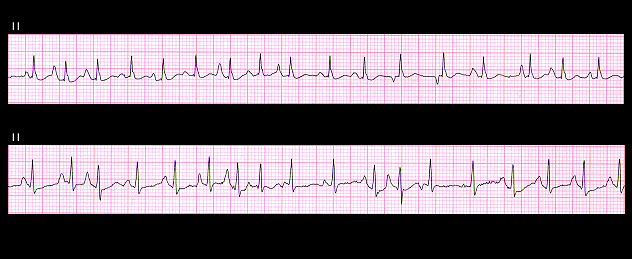
The heart rate in patients with mutifocal atrial tachycardia is usually in the 120–150 range, although both slower and faster rates are reported. Shown here is lead II from the two preceding examples. In both, the rate is between 140 and 150 beats per minute. The shortest PP interval is 0.30 seconds in the upper tracing and 0.26 seconds in the lower.
At more rapid atrial rates, some of the P waves may not conduct to the ventricles because of AV nodal refractoriness. In addition, intra-atria re-entry may occur causing atrial flutter or fibrillation. These features are illustrated on the next page.
